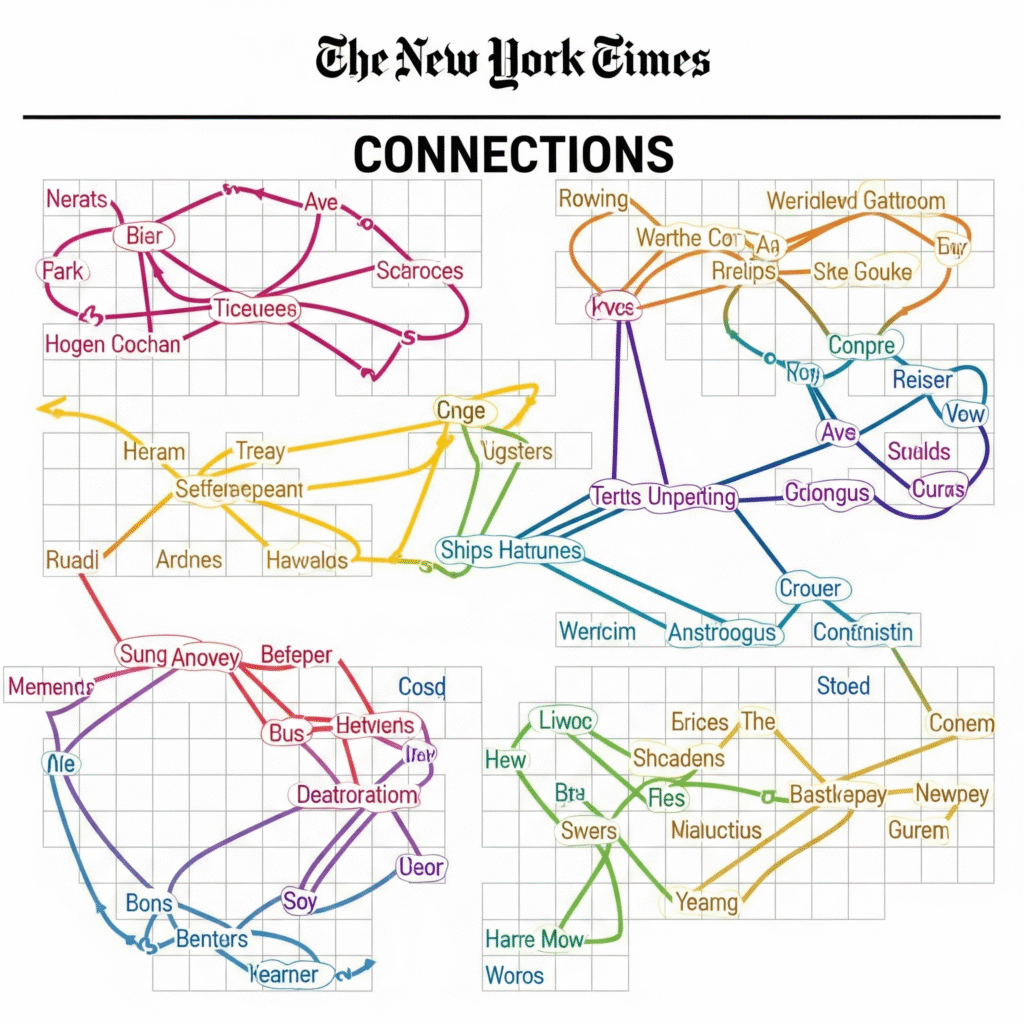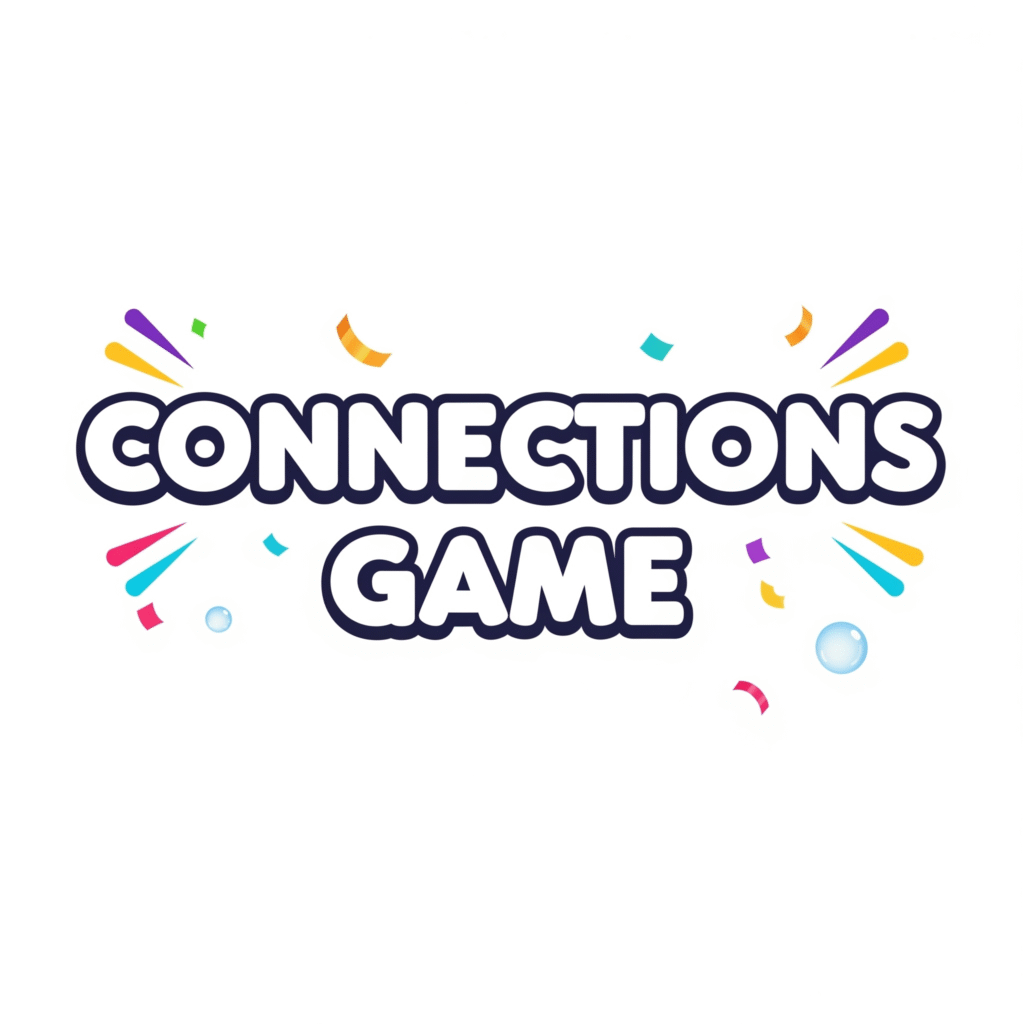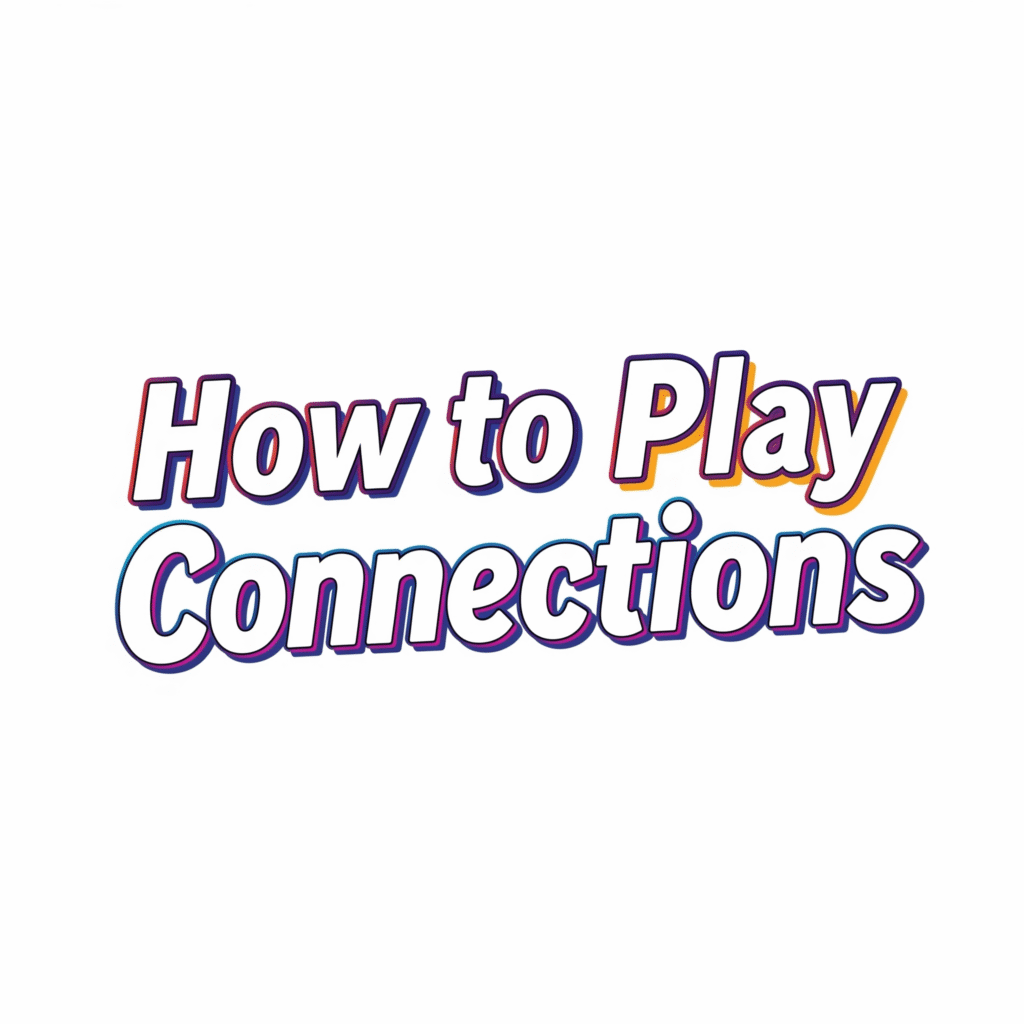
In the constantly changing universe of online word games, another new contender has swept the community of puzzle lovers off their feet: Connections. This intriguing game, a mainstay of the New York Times’ Games section these days, challenges players to discover hidden connections between words that do not necessarily overlap. It’s a matter of vocabulary, deductive reasoning, and attention to detail. So, what is Connections, and how do you play it? Let us get into the details of this engaging word puzzle.
What is the Connections Game?

At its simplest, Connections is an association word puzzle. Every day, players are given a grid of sixteen words. The words are not randomly tossed together; they are chosen and placed in four categories, each with four words that are associated with one another. The game challenge would be to accurately identify these four categories and the four words each category has.
The brilliance of Connections is its simplicity and the potential for surprising complexity. Some of the connections will be obvious and readily apparent, but others will require higher-order thinking and a deeper grasp of language and general knowledge. The categories can range from straightforward groupings like “types of fruit” or “colors” to more nuanced connections based on wordplay, idiomatic expressions, or etymology.
What makes Connections so engrossing is that most of the sixteen words will appear to have multiple possible connections. That studied ambiguity forces players to carefully consider all of the possible connections before making a guess. You can’t just think of four words that sound connected; you have to think of the specific connection that the puzzle creator in mind.
How to Play Connections: A Step-by-Step Guide

Playing Connections is simple, yet mastering it requires practice and an eye for detail. This is how the game is played:
1. The Original Grid:
When you begin a new round of Connections, you will be shown a 4×4 grid of sixteen words. Read the words slowly and deliberately. Think about their meanings and whether or not any of the words leap out at you right away as being connected to one another.
2. Identifying Potential Connections:
This is what the game is all about. Your job is to discover themes, categories, or similarities among the words. Here are some questions to ask yourself:
- Are a few of these words of the same broad type of thing (e.g., animals, nations, verbs)?
- Do any of these words have a common prefix or suffix?
- Are these words ever used together in one basic sentence?
- Are any of these words identical sounds or spellings (which produce wordplay such as homophones or anagrams)?
- Are there any of the words associated with a particular subject or field of study (e.g., sports, literature, science)?
Don’t hesitate to scribble down possible combinations or ideas while you try out concepts. Many times, having the words side by side can stimulate a link.
3. Choosing and Submitting Sets:
After you believe you’ve selected four words from a category, click or tap on each of the four words to choose them. After you’ve completed four words, a “Submit” button will appear. Click this button to submit your answer.
4. Feedback and Attempts:
The game gives you instant feedback on your answer:
- Correct Group: If all your four chosen words fall into one of the categories, they will be taken out of the grid and put under a colored label with the category name. The color of the labels signifies the difficulty of the category, with yellow being the easiest to purple being the most difficult.
- Incorrect Group: If the words you have chosen do not belong to one of the intended groups, you will be told that you’ve made an incorrect guess, and you will lose one of your four attempts. The incorrect words will still be in the grid. You might also be given a hint, e.g., “One Away,” when three of your chosen words are in a correct group.
5. Continuing the Process:
After every guess, both right and wrong, you repeat the same thing again, searching for connections between the words left in the grid. Your aim is to guess all four categories correctly before you exhaust your four attempts.
6. Winning or Losing:
- Winning: You win the game when you have properly identified all four categories and placed all sixteen words in their correct categories.
- Losing: You lose the game when you get four wrong answers before you correctly identify four categories.
7. Daily Puzzle:
Similar to most popular internet word games, Connections generally has a new puzzle every day, inviting viewers to come back each day and play a new puzzle.
Strategies for Success

Although luck might intervene at times, there are a few methods that will give you a better opportunity to solve the Connections puzzle:
- Search for the Obvious First: Begin by attempting to locate any categories that are clearly apparent right away. Eliminating an easier category can reduce the number of possibilities for the remaining words.
- Consider All Meanings: Keep in mind that words have more than one meaning. The intended connection may be based on a rarely used meaning.
- Be Careful of Red Herrings: The makers of the puzzles like to include words that seem like they could go into more than one category. Don’t rush. Consider all the words remaining before you decide on a group.
- Think Broadly and Narrowly: Occasionally the link is very general (e.g., “things that are cold”), but occasionally it’s very specific (e.g., “words that can follow ‘ice’\”). Be ready to think in a different way.
- Use Your Mistakes: When you receive a “One Away” clue, take note. This is a signal that you have three of your selected words right and must come up with the fourth.
- Don’t Be Afraid to Shuffle: If you get stuck, the game usually has a “Shuffle” button which shuffles the grid. This can sometimes give you a fresh perspective on the words and make you notice connections you may have otherwise overlooked. * Watch for Wordplay: Look for categories that have puns, homophones, anagrams, or other kinds of wordplay. These are usually the most difficult categories to solve.
- Think Outside the Box: Most often the connections do not exist. They could be based on cultural icons, common idioms, or abstract concepts.
The Power of Relationships

Connections’ success is due to several reasons:
- Challenging but Accessible: The game is a good mental workout but neither too demanding nor demanding expertise. * Daily Engagement: The daily arrangement of puzzles invites consistent play and builds camaraderie among the players as they share and compare their answers. * Range of Categories: The wide range of possible categories keeps the game exciting and unpredictable. You never know what kind of connection you’ll discover next. * Sense of Achievement: Being able to locate a hard connection is very rewarding. In conclusion, Connections is an engaging word puzzle game that challenges players to think strategically and creatively about words. Its simple rules and addictive nature have made it a success in the world of online word games. So, the next time you feel like you need to challenge your mind, try Connections and see whether you will be able to solve the coded word connections.
Connections Game